By Chiemi Nagle
In the Upper Limahuli Preserve (ULP), we steward the upper portion of an ahupuaʻa system that is home to dozens of endangered plants, birds, and other wildlife. As part of our work to protect the endangered seabirds that call the preserve home, we utilize over one hundred strategically placed trail and cellular-enabled cameras. These cameras help us closely monitor the birds’ health and safety, while also assisting in tracking and managing predators that endanger their survival. Browse a few photobombs captured on our cameras that showcase the diverse wildlife—both native and introduced—that frequent the preserve.
Asio flammeus sandwichensis
Pueo are a subspecies of the short-eared owl that are only found in Hawai’i. Unlike many owls, pueo hunt and are more active during the day. In comparison to barn owls, pueo are smaller, stockier, and darker in color with brown streaking and a brown, round face. In Hawaiian cosmology, they are an ‘aumakua that protect families from harm.

Himatione sanguinea
‘Apapane were common on all major Hawaiian islands, but are now currently restricted to native forest habitats at higher elevations. They are primarily nectivorous and are one of the most important ‘ōhi’a pollinators. In the ULP, they are the most common forest bird that we see. They are easy to view because of their bright red, black and white feathers and by hearing their distinctive calls all around the preserve including from our weatherports. They also have a characteristic wing flutter sound while flying around. In gusty winds, we see them get swept and blown around at speed.
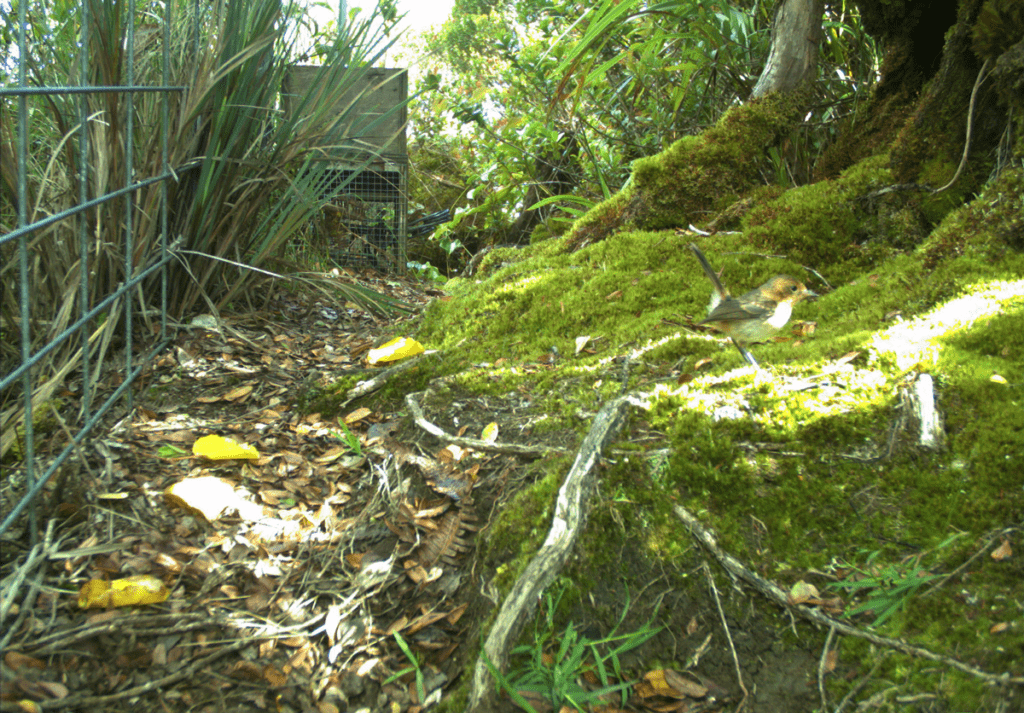
Chasiempis sandwichensis sclateri
The subspecies C.s. sclateri is endemic to Kaua’i. ‘Elepaio used to be found at all elevations but are now only found in forests above 3,000 feet. In Hawaiian cosmology, they are the ‘aumakua of canoe makers. They forage on small insects and spiders, looking for invertebrates in leaf litter or along branches of ‘ōhi’a trees. In the preserve, they like to visit us when we are doing weedwork on slopes and in drainages, they are very friendly and curious and will hang around, calling and fluttering on the branches.
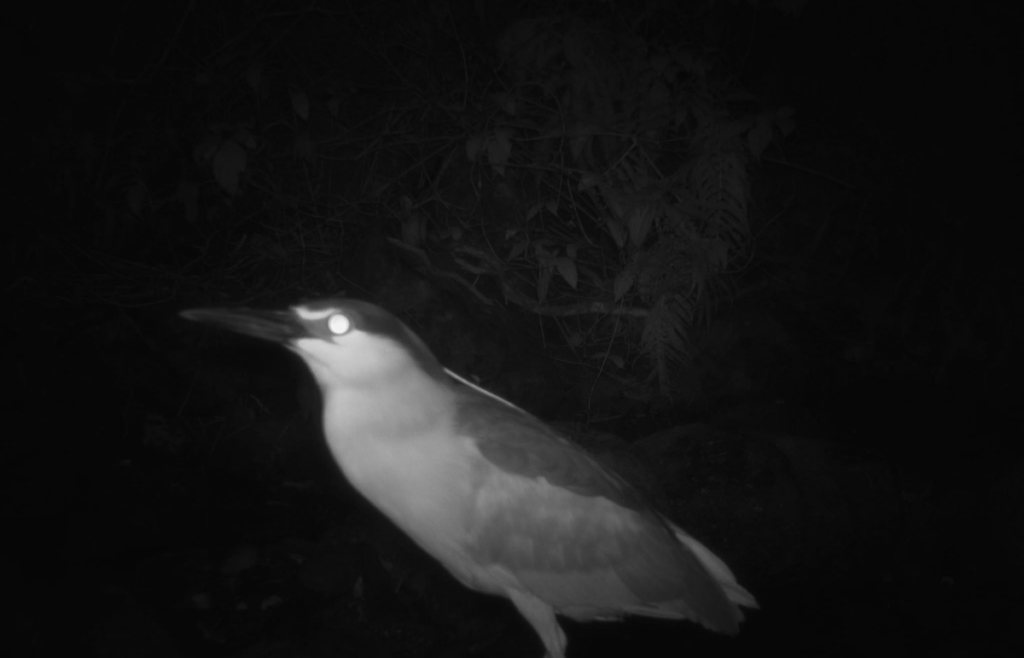
Nycticorax nycticorax hoactli
‘Auku‘u are a species found on almost every continent. The subspecies N. n. hoactli occurs in Hawai‘i, as well as across North America and most of South America. They are sociable but unlike the continental birds, those in Hawai’i are more active during the day. Their diet consists of insects, fish, frogs, mice, and chicks of other native waterbirds. In the preserve, we have observed them a few times on our remote cameras walking along the streams, but have never seen them while we are out working.
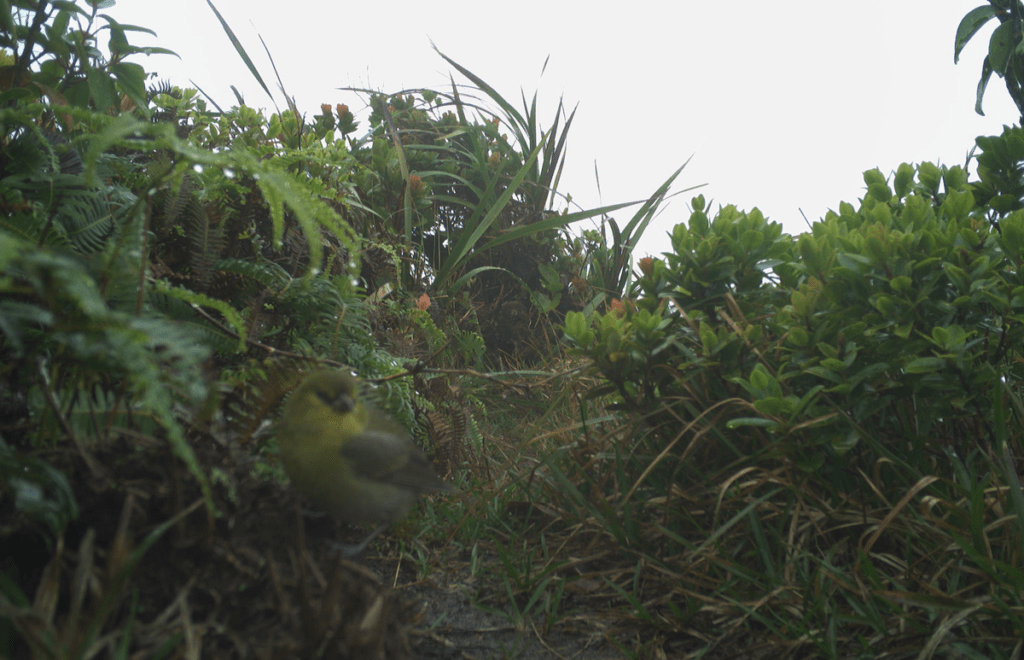
Chlorodrepanis stejnegeri
Kaua’i ‘amakihi are only found on Kaua’i and are the largest ‘amakihi species. They used to be common around the whole island but are now only found in high elevation forests. They feed on insects, nectar, and fruit, foraging along branches and trunks. They nest exclusively in ‘ōhi‘a trees. In the preserve, we occasionally see and hear them foraging in the trees.
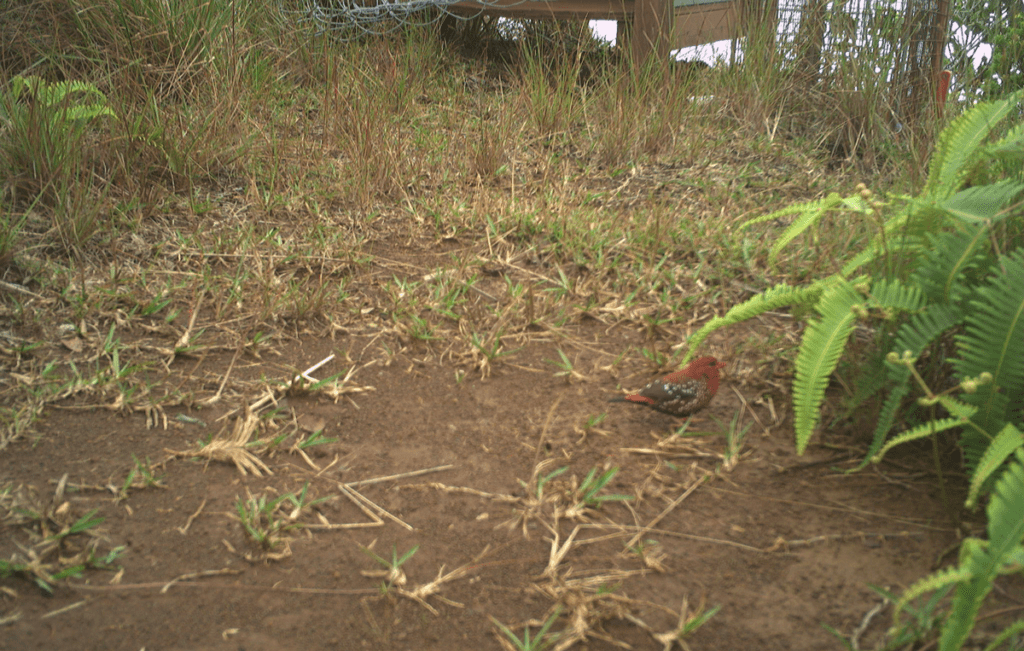
Amandava amandava
Strawberry finches were brought to Hawai’i from Southeast Asia in the early 1900s. They feed on grass seeds in open areas around water sources. This was the most recent new sighting on our remote cameras in the preserve.
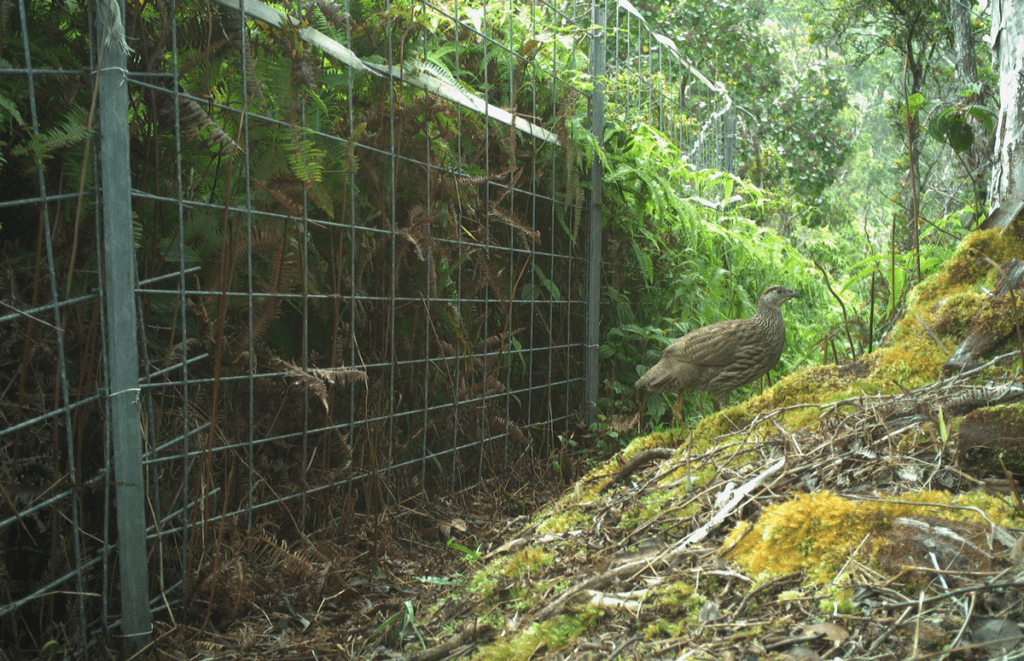
Francolinus erckelii
Erckel’s francolins were introduced to Hawai’i in 1957 as a gamebird. In their native habitat, they range from sea level to 9,000 ft. In the preserve, we have observed them on our remote cameras walking along the fence line trail, but have never heard or seen them while we are out working.
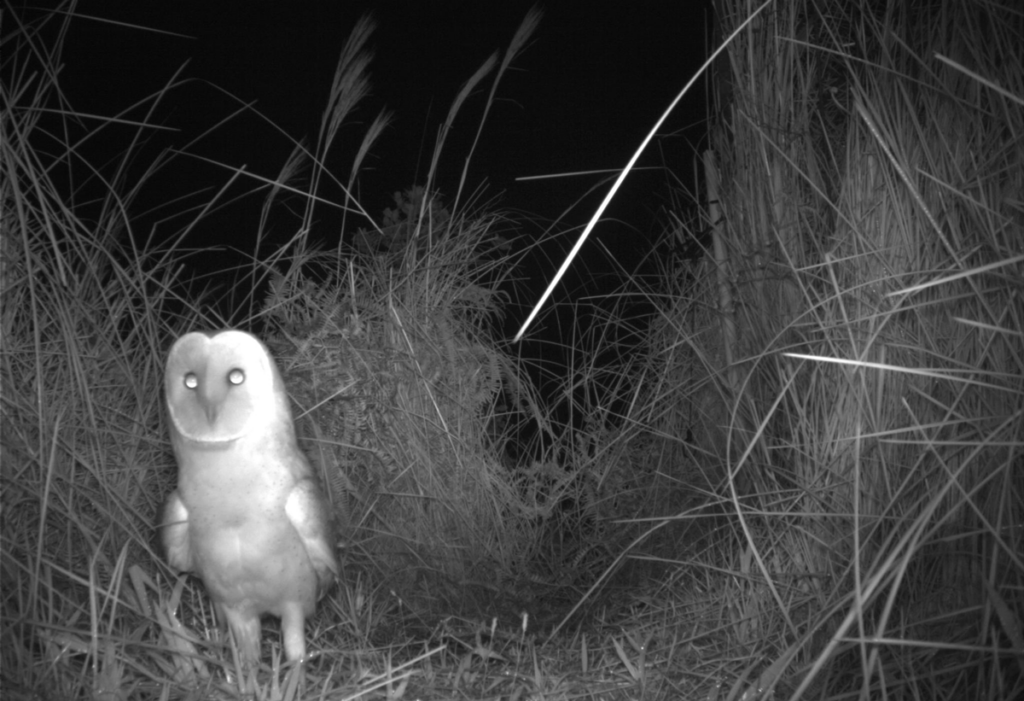
Tyto alba
Barn owls were introduced to the Hawaiian Islands in the late 1950s as a biological control for rats in sugar cane fields. They were a confirmed seabird predator in 1980 and have become common throughout the main Hawaiian Islands. Barn owls are lanky and light in color with a nearly white, heart-shaped face. They are nocturnal, starting to hunt around dusk, but mostly stalk their prey under the cover of darkness. In Hawai’i, from January 2011 to October 2018, 379 barn owl depredations were recorded of eight seabird species, mostly adult birds. In the preserve, barn owls predate two species of federally listed seabirds; Puffinus newelli, Newell’s shearwater and Pterodroma sandwichensis, Hawaiian petrel. Night hunts are conducted by ULP staff to control barn owls; 28 owls have been removed to date.